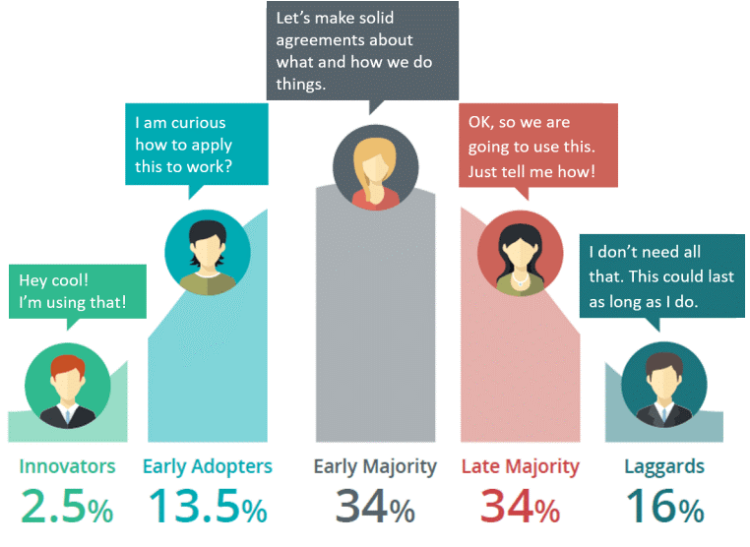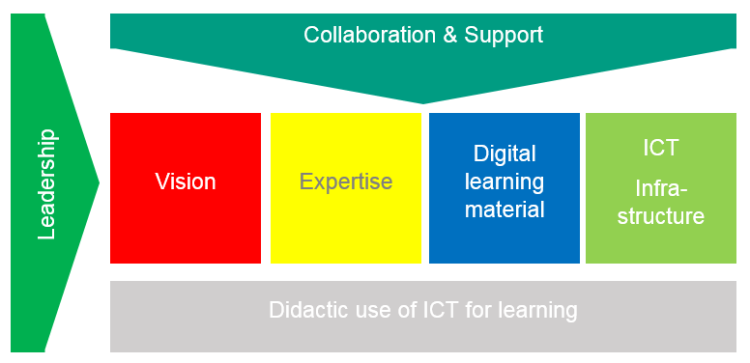
During topic 4, we focused on the question ‘how to convince the head of the department to start with blended learning’.
The scenario of Topic 4: “I have recently attended a course in online learning and it has offered many new insights regarding transformative opportunities for my own teaching. So how can I now put this into play in the activities and contexts of my own teaching while simultaneously addressing some of the challenges associated with online learning? I am keen to design my own online or blended learning course that promotes student engagement, community, collaborative learning and enables me to practice the principles of good facilitation. To convince our heads of department, I think I must formulate a convincing argument and maybe try to illustrate in a visual way what a good online or blended learning design could look like. I wonder which activity, module or course I should choose? Maybe I should involve some of the colleagues in this?”
As a group, we came up with ‘good practices’ based on educational arguments that should convince the manager. I think it was good to see that we included not only the instructors as stakeholders in our problem solving, but also the students.
Adoption curve Rogers
The instructor in the scenario of topic 4 probably is a ‘innovator’. In our elaboration of the assignment the instructor was supported by a colleague who also recognized the added value of blended learning. Perhaps this colleague can be placed in the model of Rogers (fig. 1) as an innovator or an early adopter.

Fig. 1 Rogers adoption curve
An ‘old’ model but still usable is the adoption curve of Roger. This is a simple format that you can use when classifying your teachers. Every team has ‘innovators’ and ‘laggards’ (and everything in between). It takes leadership to move everyone in the right direction. When I read the case study, I immediately thought of this model.
I realise we do not all have innovators in our PBL group. I estimate some of my PBL members to be more like early adopters and perhaps even early majority than I would attribute them to the select group of innovators. I am certainly not an innovator myself. I want to know the added value of something before I actually dive into it. Because of the variation in our group the collaboration worked well.
Bottum-up en top-down
In the case study, a bottom-up approach is used to convince the school management. In our elaboration we do not know exactly how it will end. But I can describe a follow-up scenario myself. If you have convinced the manager to introduce Blended Learning, the next step is to make a plan to implement it. How do you do that? What problems are you going to encounter?
Four in Balance model (Vier in Balans model)
A model that I have been using for years as a guideline for discussing and implementing innovations is the ‘Four in Balance’ model.

Fig. 2 Four in Balance model (Vier in Balans)
The model describes four preconditions that must be in balance in order to achieve a return on investment with ICT in education: vison, expertise, digital learning material and ICT infrastructure.
Every innovation starts with a clear vision you have or want to develop. If you want to implement blended learning, you need to formulate a vision on blended learning that is supported by your teaching team. It requires leadership to gain support and commitment. In order to be able to put your vision into practice, it is important your has the right expertise or setup a training plan to develop the necessary expertise . A prerequisite is collaboration in your team and facilitation (support) by management. You need further a stable and reliable ICT infrastructure and digital learning resources.
Levers for change
In each phase of implementation it is important to consider how to (re)engage each of the aspects of the model. For example, how are you going to use your leadership? This differs per phase. In each phase you can use different strategies such as levers to achieve change. In the phase in which the teachers from our case are the ‘oil slick effect’ works well as implementation strategy. Supplemented by facilitating the teachers in time, freedom to experiment and training. Showing good practices from colleagues is also a good strategy.
What I find out during the exploration of topic 4 is that the older models I used in the past are still applicable. Although the Community of Inquiry model is not new to me, I have become better acquainted with the model through topic 4. It has become a useful and manageable pair of glasses to look at blended and online education. I will certainly use the model more often. The addition of the emotional presence is an aspect of which I don’t know very well what to do with it. I didn’t know this addition yet. I’ll let that sink in emotionally 